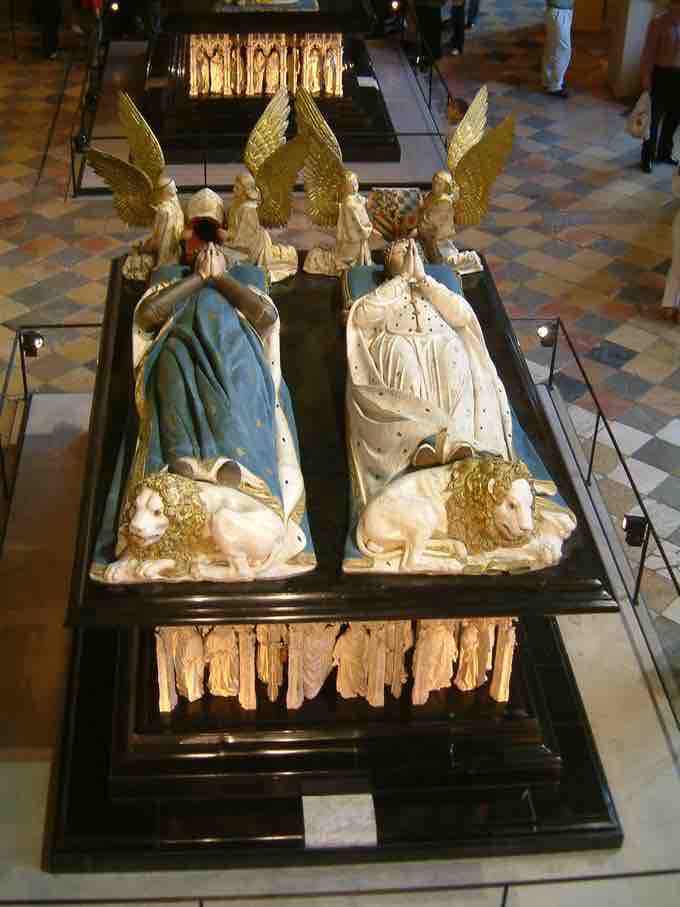Monastic Splendor
The Chartreuse de Champmol, formally the Chartreuse de la Sainte-Trinité de Champmol, was a Carthusian monastery on the outskirts of Dijon, which is now in France, but in the 15th century was the capital of the then-independent Duchy of Burgundy. The monastery was founded in 1383, by Duke Philip the Bold, to provide a dynastic burial place for the Valois Dukes of Burgundy, and operated until it was dissolved in 1791, during the French Revolution. It was lavishly enriched with works of art, and the dispersed remnants of its collection remain key to the understanding of the art of the period. Champmol was intended to rival Cîteaux, Saint-Denis, where the Kings of France were buried, and other dynastic burial places.
Purchase of the land and quarrying of materials began in 1377, but construction did not begin until 1383, under the architect Druet de Dammartin from Paris, who had previously designed the Duke's chateau at Sluis, and worked as an assistant in the construction of the Louvre. A committee of counselors from Dijon supervised the construction for the often absent Duke. By 1388 the nearly completed church was consecrated. Claes Sluter and his workshop produced sculptures of Philip and his wife kneeling in prayer toward the central sculpture of the Madonna and Child for the church's main portal.
Claes Sluter. West portal of the church.
Sculptures of Philip the Bold (left) and his wife (right) kneeling before the Madonna and Child.
The monastery was built for 24 choir monks, instead of the usual 12 in a Carthusian house. Its cloister surrounded a courtyard in which Sluter constructed the Well of Moses (1395–1403), whose monumental sculptures combine the International Gothic style with a northern realism. Their scale, however, is unprecedented in either style. The figures range from the namesake of the well to Old Testament prophets to the Crucifixion. Although it was intended to function as a fountain, the water feature was abandoned so as not to conflict with the monks' vow of silence.
Claes Sluter. Well of Moses
The base of the Well of Moses shows the prophets who foretold the coming of Christ.
In 1433, two more monks were endowed to celebrate the birth of Charles the Bold. These lived semi-hermitic lives in their individual small houses when not in the chapel. Other inhabitants of the monastery included non-ordained monks, servants, novices, and other workers.
Champmol in 1686.
The cottage-like hermitages of the monks can be seen surrounding the main cloister, with the Well of Moses in the middle.
A Ducal Symbol
Somewhat in contradiction to the Carthusian mission of tranquil contemplation, the monastery welcomed visitors and pilgrims. The expenses of hospitality were then recompensed by the Dukes. In 1418, Papal indulgences were granted to those visiting the Well of Moses, further encouraging pilgrims. The Ducal family had a private oratory overlooking the church, which has since been destroyed, though their visits were in fact rare. Ducal accounts show major commissions for paintings and other works to complete the monastery continuing until about 1415. Further works were later added by the Dukes and other donors, although building progressed at a slower rate.
The Valois dynasty of Burgundy had less than a century to run when the monastery was founded. The number of Valois tombs never approached that of their Capetian predecessors at Cîteaux, as the choir of the church was not large enough to accommodate them. Only two monuments were ever erected, both in the same style, with painted alabaster effigies with lions at their feet and angels with spread wings at their heads. Underneath the slab on which the effigies rested, small unpainted pleurants (mourners) were set among Gothic tracery. They were, at the time of their production, the most moving representations of grief conveyed in a sculptural medium.

Pleurants (Mourners)
Stone mourners at a tomb in Chartreuse de Champmol. Approximately 40 cm high.

Tomb of John the Fearless and Margaret of Bavaria
John the Fearless commissioned work on this tomb, though by his death in 1419 nothing had been done. The project saw several different artists at work until its completion in 1470.
Champmol was designed as a showpiece. The artistic contents, now dispersed, represent much of the finest monumental work of French and Burgundian art of the period, demonstrating a tradition distinct from that of the similarly prestigious illuminated manuscripts.